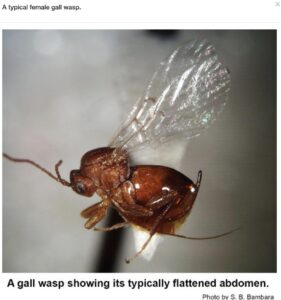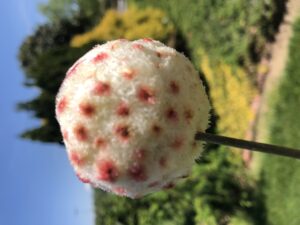Plant Health Alert – Wooly Sower Gall
go.ncsu.edu/readext?931810
en Español / em Português
El inglés es el idioma de control de esta página. En la medida en que haya algún conflicto entre la traducción al inglés y la traducción, el inglés prevalece.
Al hacer clic en el enlace de traducción se activa un servicio de traducción gratuito para convertir la página al español. Al igual que con cualquier traducción por Internet, la conversión no es sensible al contexto y puede que no traduzca el texto en su significado original. NC State Extension no garantiza la exactitud del texto traducido. Por favor, tenga en cuenta que algunas aplicaciones y/o servicios pueden no funcionar como se espera cuando se traducen.
Português
Inglês é o idioma de controle desta página. Na medida que haja algum conflito entre o texto original em Inglês e a tradução, o Inglês prevalece.
Ao clicar no link de tradução, um serviço gratuito de tradução será ativado para converter a página para o Português. Como em qualquer tradução pela internet, a conversão não é sensivel ao contexto e pode não ocorrer a tradução para o significado orginal. O serviço de Extensão da Carolina do Norte (NC State Extension) não garante a exatidão do texto traduzido. Por favor, observe que algumas funções ou serviços podem não funcionar como esperado após a tradução.
English
English is the controlling language of this page. To the extent there is any conflict between the English text and the translation, English controls.
Clicking on the translation link activates a free translation service to convert the page to Spanish. As with any Internet translation, the conversion is not context-sensitive and may not translate the text to its original meaning. NC State Extension does not guarantee the accuracy of the translated text. Please note that some applications and/or services may not function as expected when translated.
Collapse ▲Have you ever found a pinkish-white marsh mellow-like structure growing on your white oak tree and wondered, “What the heck is that?”
The wooly sower gall is an unusual plant growth induced by the secretions of the grubs of a tiny 1/8 inch gall wasp. Gall wasps have alternation of generations in which one generation develops in one type of gall (leaf gall) and their offspring develop into another type of gall (stem gall). Scientists do not know what the alternate wool sower wasp gall even looks like. How cool is that?!
The wasps do not sting people and are not harmful to trees. Scientists do not know much about these tiny little creatures. What do they feed on? What does the alternate lifecycle even look like? The wooly sower gall wasp is just one of the many weird and wonderful surprises that nature has to offer us. If you have these in your woods and get to see one in the spring, consider yourself lucky.

The tiny wooly sower gall wasp.






